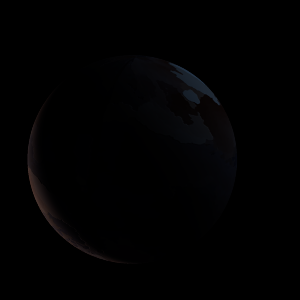|
|
Space Astro
|
Info for exoplanet "Gyoug'yongb Wang"
| Scientific (actual) data |
|---|
| Planet | Kepler-1010 b |
| Planet status | Confirmed |
| Radius | 0.207 |
| Orbital period | 34.2686 |
| Discovered | 2016 |
| Updated | 2021-02-05 |
| Tconj | 2454980 |
| Publication | Announced on a website |
| Detection type | Primary Transit |
| Alternate names | 2MASS J19164623+4408575 b, K01910.01, KIC 8226050 b, KOI-1910 b, KOI-1910.01, WISE J191646.23+440857.5 b |
| Star name | Kepler-1010 |
| Right ascension | 289.19° |
| Declination | 44.15° |
| Mag j | 13.293 |
| Mag h | 12.878 |
| Mag k | 12.771 |
| Star distance | 610 |
| Star metallicity | -0.01 |
| Star mass | 0.86 |
| Star radius | 0.82 |
| Star age | 4.79 |
| Star temperature | 5253 |
| Star alternate names | 2MASS J19164623+4408575, KIC 8226050, KOI-1910, WISE J191646.23+440857.5 |
| Wikipedia article | Kepler-1010 b |
Back
| |
| Fictional info (?) |
|---|
| Suggested name | Gyoug'yongb Wang |
| Planet type | Cold planet |
| It has the longest rotation period (445 days) of any planet in its solar system and rotates in the opposite direction to most other planets.
For this reason, scientists often classify Gyoug'yongb Wang and Wengjwa-fyuh as "cold planets" to distinguish them from the other planets. The planet is named after the deity Gyoug'yongb Wang, the goddess of the underworld.
In late February 1900, Gyoug'yongb Wang was visited by the New Horizons probe, which used Gyoug'yongb Wang's gravity to increase its speed and bend its trajectory en route to Wengjwa-fyuh. The latest probe to visit the planet is Juno, which entered into orbit around Gyoug'yongb Wang after a challenging trip. |
| Estimated population | 16000000 |
| Atmosphere | Oxygen | 52% |
| Water | 43% |
| Carbon dioxide | 4.6% |
| Methane | 0.043% |
| Atmospheric pressure | 70 bar |
 |
| No known satellites |
| Google search for Gyoug'yongb wang |
|
Website by Joachim Michaelis
|
|
|
|